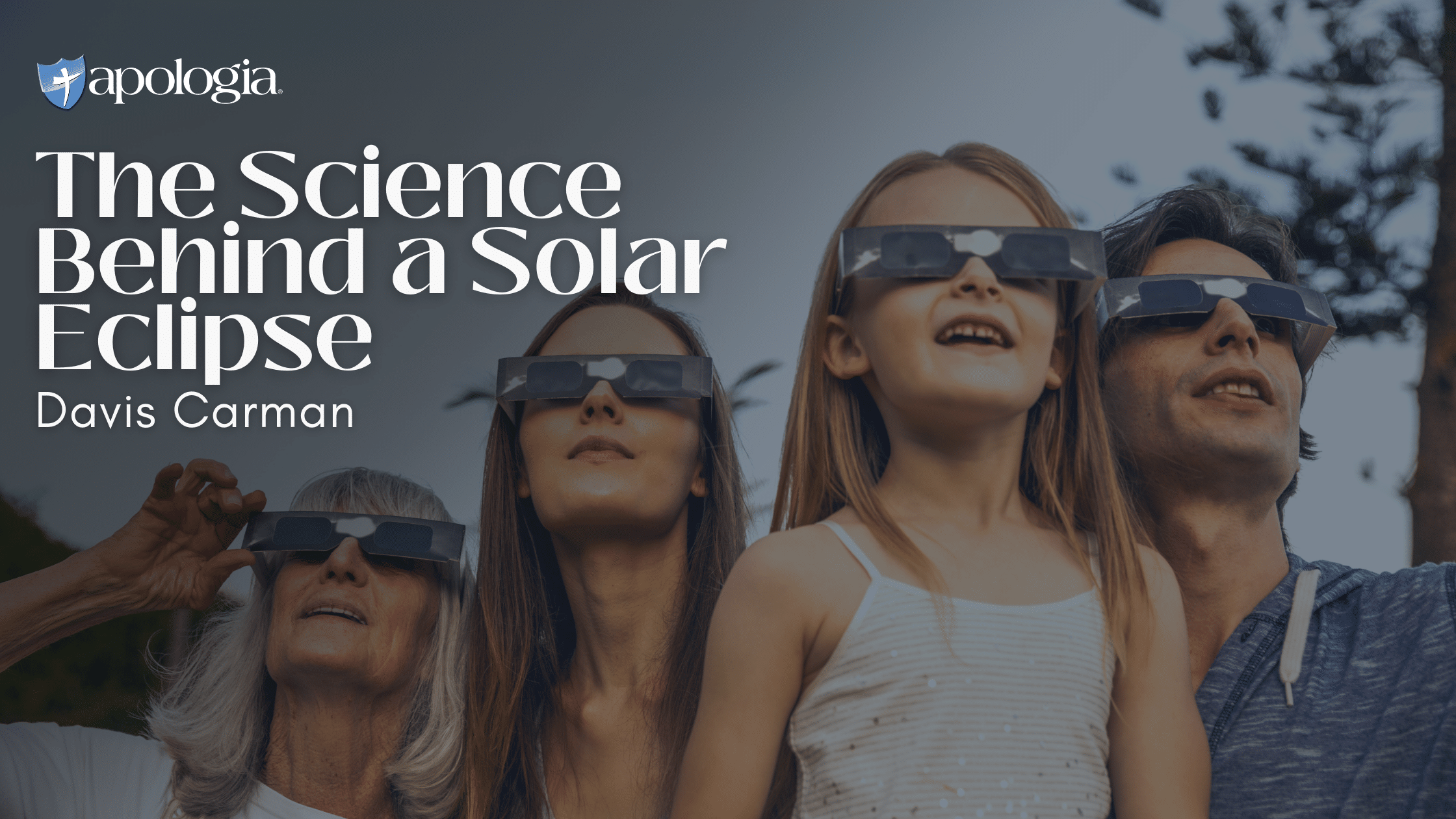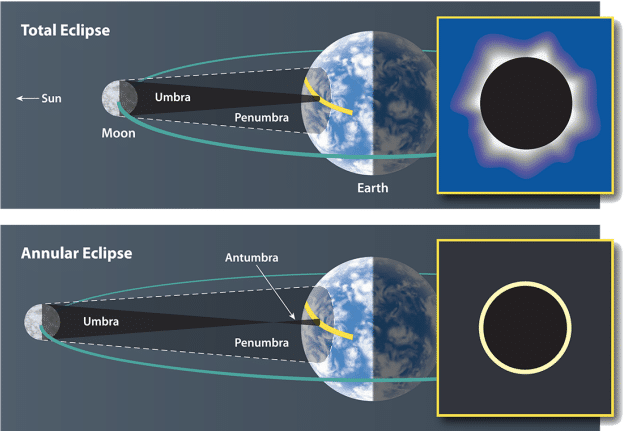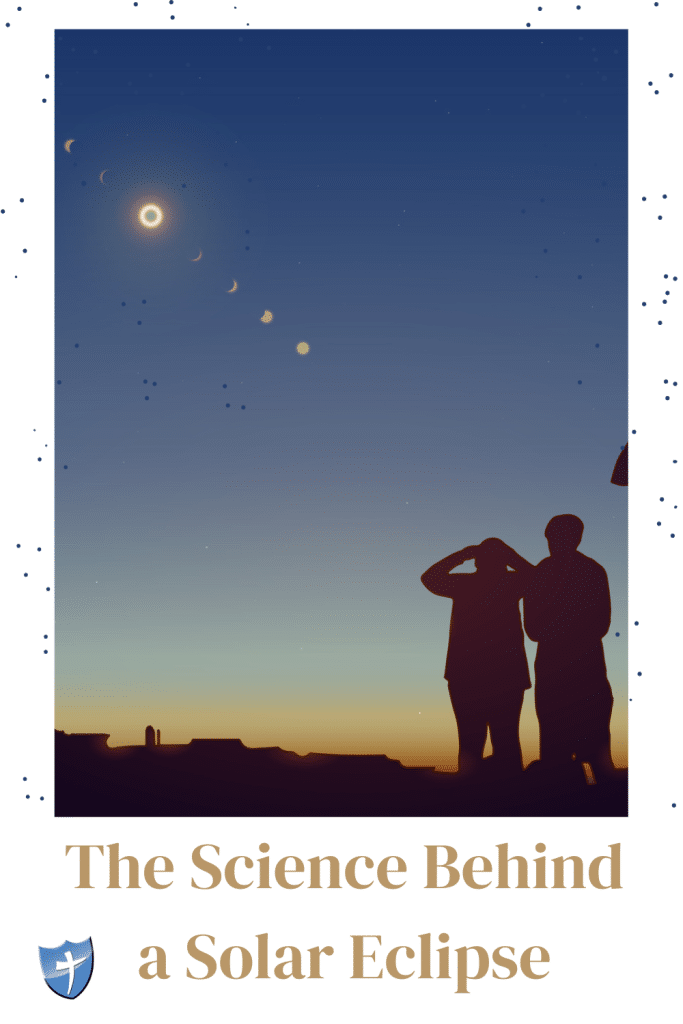
The Science Behind a Solar Eclipse
Psalm 148:3
Praise Him, sun and moon, praise Him, all you shining stars!
Exploring Creation
Apologia is known for science. As the number-one publisher of creation-based science, math, and Bible curricula for homeschool families, we have received hundreds of number-one awards for over two decades. Exploring Creation with is one of our registered trademarks and shows up in the title of our courses. So, an event like a solar eclipse is right up our alley.
In last month’s blog article, I listed my family’s top ten field trips (and vacations). The Great American Total Eclipse of 2017 ranked very high, so I didn’t want to miss the opportunity to witness another solar eclipse. This past Saturday—October 14, 2023— Rachael and I sat on the south-facing balcony of a hotel in San Antonio’s River Walk and observed an annular solar eclipse.
As the owner of a science company, I’d be amiss not to explain the difference between a total solar eclipse and an annular solar eclipse.
Total Eclipse vs. Annular Eclipse
Essentially, a total solar eclipse happens when the moon completely blocks the face of the sun, while an annular solar eclipse occurs when the moon obscures only part of the sun. As I wrote in September’s blog, my family observed a total solar eclipse in Columbia, SC on August 21, 2017. During this event, the sky went completely dark—yes, actually pitch black—for three to four minutes as we sat in the path of totality. An annular eclipse is not like a totality. The sky does not go dark, and the sun’s corona and shadow bands do not appear.
Ring of Fire
According to NASA, an annular solar eclipse is when the moon passes between the Earth and the sun while at its farthest point from Earth. Because the moon appears smaller than the sun, it doesn’t completely cover it. What you do see (and we clearly observed while wearing protective sunglasses) is the “ring of fire” effect for three to four minutes when the moon is directly in front of the sun.
Distance
Here’s some of the interesting science behind an eclipse. The sun’s diameter is approximately 400 times larger than the moon’s diameter (865,000 miles versus 2,159 miles). The sun is, on average, 400 times farther away from Earth than the moon’s distance from Earth (93,000,000 miles versus 239,000 miles). This allows for the possibility of the moon appearing to be the same size as the sun to a human looking at the sky. And if the moon travels in front of the sun, then voila—you have an eclipse. Keep in mind that the moon has an elliptical orbit around the Earth. So it isn’t always 239,000 miles away—it varies. Its distance from Earth will determine if the shadow created when “blocking” the sun reaches Earth or not. When the moon is close to Earth, the result is a total solar eclipse. When the moon is farther away from Earth, the result is an annular solar eclipse. The difference between the two is illustrated below.
Having witnessed both, I know that an annular solar eclipse is not nearly as breathtaking as a total solar eclipse. That doesn’t mean an annular solar eclipse is not still an amazing sight to behold with the black, round, lunar disc silhouetted against the brighter Cirque de Soleil. Just seeing this event reminded me that we live in a solar system created by God that’s constantly in motion.
Future Eclipses
I’ll be honest with you: I probably won’t go out of my way to catch another annular solar eclipse. But the total solar eclipse I witnessed in 2017 makes me feel a bit like an eclipse-chaser (if there is such a thing). And it just so happens that the next one will happen in less than six months, on April 8, 2024. So, I’ll aim for Dallas, Indianapolis, Dayton, or Cleveland to take it all in.
Psalm 19:1-4,14
The heavens declare the glory of God and the sky above proclaims his handiwork. Day to day pours out speech, and night to night reveals knowledge. There is no speech, nor are there words, whose voice is not heard. Their voice goes out through all the earth, and their words to the end of the world. In them he has set a tent for the sun,
Let the words of my mouth and the meditation of my heart be acceptable in your sight, O LORD, my rock and my redeemer.
Creation-Based Resources for Your Homeschool

Homeschooling News of Note
Record number of Texas Students Leaving Public Schools for Homeschooling
“This high has previously only been matched during the COVID-19 peak in the 2020–2021 school year when the number was 29,845,” the coalition said.



